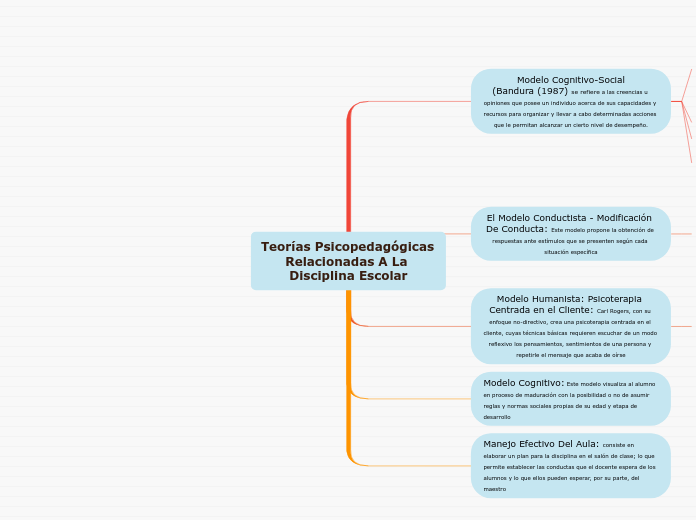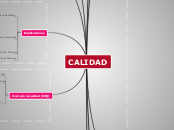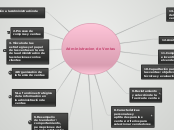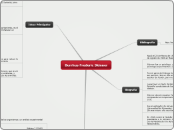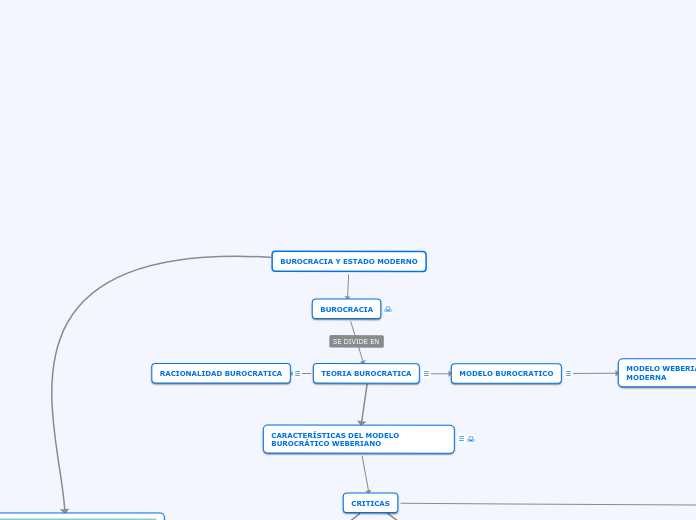Teorías Psicopedagógicas Relacionadas A La Disciplina Escolar
To name your story, you have to think about the overall message and what you want your audience to understand from the story. Also, make it relevant and easy to remember.
Manejo Efectivo Del Aula: consiste en elaborar un plan para la disciplina en el salón de clase; lo que permite establecer las conductas que el docente espera de los alumnos y lo que ellos pueden esperar, por su parte, del maestro
Modelo Cognitivo: Este modelo visualiza al alumno en proceso de maduración con la posibilidad o no de asumir reglas y normas sociales propias de su edad y etapa de desarrollo
Modelo Humanista: Psicoterapia Centrada en el Cliente: Carl Rogers, con su enfoque no-directivo, crea una psicoterapia centrada en el cliente, cuyas técnicas básicas requieren escuchar de un modo reflexivo los pensamientos, sentimientos de una persona y repetirle el mensaje que acaba de oírse
The ending of a story is essential. We all know that if the ending is weak, what happened before loses its importance. So make it unpredictable, but fair. A resolved ending answers all the questions and ties up any loose threads from the plot.
Este enfoque lleva a que los docentes comuniquen con facilidad sus pensamientos a los estudiantes, se implementen estrategias las cuales son en común acuerdo y de esta forma se promueve la comprensión y la ayuda mutua.
This is the moment when the main character surpasses the last obstacle and finally faces their greatest challenge.
The climax usually follows one of these patterns:
- realization
- resolution
- choice
Type in your answer.
El Modelo Conductista - Modificación De Conducta: Este modelo propone la obtención de respuestas ante estímulos que se presenten según cada situación específica
The middle of the story is where you add layers of complications that will lead to the end. Reveal more about the character's journey. Did their personality go through changes? How did they overcome the challenges? And as you build up the story’s central conflict, make it more personal to that character. Also, from the middle act, you have to lead into the final act.
Refuerzo
Each story has a main character and that character usually needs to solve a problem or challenge. The character's challenge is the one that creates tension throughout the story.
Autodirección
Análisis conductual aplicado
Castigo
Saciedad
Moldeamiento
Type in any other challenges which other characters in the story need to face.
Programas de refuerzo
In most stories, there are 3 challenges. The number 3 is a mystical number symbolizing completeness. Try to come up with interesting challenges with which your character needs to struggle.
See a few examples below:
- turns into a werewolf at night
- is sent back in time
Modelo Cognitivo-Social
(Bandura (1987) se refiere a las creencias u opiniones que posee un individuo acerca de sus capacidades y recursos para organizar y llevar a cabo determinadas acciones que le permitan alcanzar un cierto nivel de desempeño.
In the beginning of the story (or the exposition), you will need to introduce the setting and characters. You might also want to introduce the main conflict. This part of the story is important because it gives the reader necessary background information and maybe even a first insight into a character’s personality.
Registro de las verbalizaciones resultantes del procedimiento cognitivo de la formación de auto eficiencia
Sugestión y exhortación verbal
The setting (time & place) of a story can change throughout the plot.
busca motivar e incentivar a las personas
Your story can take place wherever your imagination will take you to.
For example: in an elevator, in an enchanted forest, etc. Don't forget to give details of the environment each time the setting changes, otherwise, the story can be confusing. Also, mention the seasons as each of them has unique weather and events.
Exposición del desempeño
Subtopic
Auto modelado
Characters are essential to a good story. Usually, the protagonist(s) is/are the most affected by the plot. Introduce a character by focusing on their actions, interests, and occupation, as the physical appearance doesn't make a difference in most cases.
Los pasos comprendidos en esta estrategia son
Registro escrito del comportamiento inapropiado
What is your character's main goal?
fight Evilfind lovedefeat his/her enemyrule the worldmake friendstime travelmake an awesome discoveryOther
Observación
Instrucción verbal
Se tienen en cuenta
Type in the name of your character.
Errores comtidos que son corregidos
Which traits best describe the character's personality? Choose more if necessary:
introvertedloyalkindindependentquick-thinkingadventuresomeidealisticsweet-naturedcalmrisk-takercreativewittystrictfussyweirdclumsyharshaggressivecarelessclingingcowardlycrueldeceitfulimpulsiveOther
Practicas exitosas Que son recompensadas
Choose the type of your chacter:
Protagonist (main character)Antagonist (main character's opponent)Flat (stereotypical character)Round (his/ her personality develops throughout the story)Static (doesn't evolve as a person throughout the story)Dynamic (dramatical change in personality)Confidant (the main character trusts him/ her)Foil (contrasting character who enhances the personality of another character)Other
